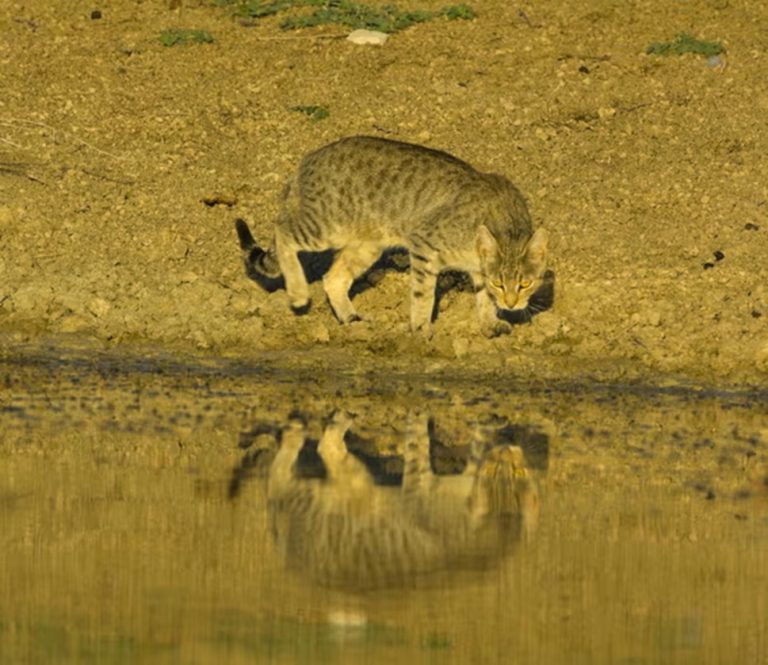PICTURE: There are any number of ways to keep cats contained. Therefore there are no excuses when it comes to keeping them safely out of harms way of native wildlife.
Feral cats don’t need to be supplemented by roaming domestic cats
Domestic cats outnumber feral cats 2:1 and while only 30 per cent are kept indoors, it needs to be 100 per cent as soon as possible.
Feral cats threaten the survival of over 100 native species in Australia. They have caused the extinction of some ground-dwelling birds and small to medium-sized mammals. They are a major cause of decline for many land-based endangered animals such as the bilby, bandicoot, bettong and numbat. Many native animals are struggling to survive so reducing the number killed by this introduced predator will allow their populations to grow.
Cat control has definitely saved at least a dozen native mammals from extinction, including the burrowing bettong and western barred bandicoot.
“Some really important victories have demonstrated that we’re becoming much more capable of dealing with cats,” Professor John Woinarski says. “There’s no single current foolproof solution, but that doesn’t mean we can’t keep making incremental improvements in our effectiveness.”
Professor Sarah Legge argues that we need to do two things: prevent any future cat-related extinctions, and help many native species recolonise parts of their historic ranges. “We’re making progress,” Katherine Moseby agrees. “We have to keep looking at multiple options because, at the end of the day, we want these animals [currently kept safe inside fenced sanctuaries] outside and in the wider landscape.”
This 100 native species must not be pitted up against those wanting to continue letting domestic cats roam and cross breed with ferals, boosting their numbers. Cat containment is a proven method of controlling cats on the loose, for the safety of native animals, with domestic cats also being kept safe indoors.
…………………………………………………………………..
Minimising the impact of pet cats
Numbering an estimated 4.9 million, pet cats currently outnumber feral cats in Australia. And while 30 per cent of them are kept indoors, the remainder are allowed to roam, with each cat killing an estimated 186 mammals, birds and reptiles each year. Pet cats hunt fewer prey than ferals, but this still adds up to 241 million native animals a year.
While many people don’t believe their pet is a killer, the reality is that “the toll of pet cats on wildlife is extraordinarily high,” says Professor John Woinarski of Charles Darwin University.
Professor Sandra Legge, at the Australian National University (ANU) in Canberra, agrees that pet cats have enormous impacts in urban areas, and says that strays act as a constant source of new cats to top up the feral population in the bush. “I’m not anti-pet cat – they are good pets – but they need to be managed so they’re not having impacts,” Sarah says.
Both John and Sarah say that if you want to minimise the impact of your pet, the top priority is not allowing it to roam.
Getting it desexed at an early age and registering it with your local council also helps prevent pets contributing to stray and feral at populations.
“Cats should be contained within houses or enclosures and not be allowed to roam freely across the neighbourhood into parks, gardens and local reserves.” John says. “We don’t allow dogs to run willy-nilly across neighbourhoods, and we shouldn’t allow cats to either.”
Extract from: When cats are not so cute (Australian Geographic, March-April 2022)
…………………………………………………………………….
Local council releases cats to roam and kill wildlife
Rules now in effect in the Cessnock LGA are very troubling. Cats found roaming that are not identifiable by way of a collar tag or microchipping are to be returned to where they were found and released. This is consistent with the Companion Animal Act and demonstrates the dire situation nature has to deal with in the face of human dithering. This also flies in the face of all the evidence that roaming cats are a shocking threat to native wildlife, and add to the breeding stock of wild feral cats.
Paul Turton on the Drive program (ABC Local Radio NSW, Tuesday 17 May) covered this story inviting listeners to comment. Texters and callers all noted the harm done by roaming cats and the need for them to be handled in the same way dogs are: contained at the owners address. Guest Troy Wilkie, RSPCA Senior Government Relations Manager, said that the Keeping Cats Safe at Home project advised that containing cats in the same way that dogs are contained was the best option, asking: ‘Do we want cats to roam and cause injuries to native species?’
Paul Turton noted that new laws in the ACT will require all residents of new suburbs to contain their cats on their properties at all times – day and night.
In the case of the roaming cats in the Cessnock LGA, MHCS maintain that roaming cats should not be released but rather, impounded and if they cannot be rehomed, euthanised in the interests of protecting native wildlife. This retrograde stance by Cessnock Council demonstrates the urgency for amending the CAA to bring it into line with other states.
MMM … Issue 30, June 2022



